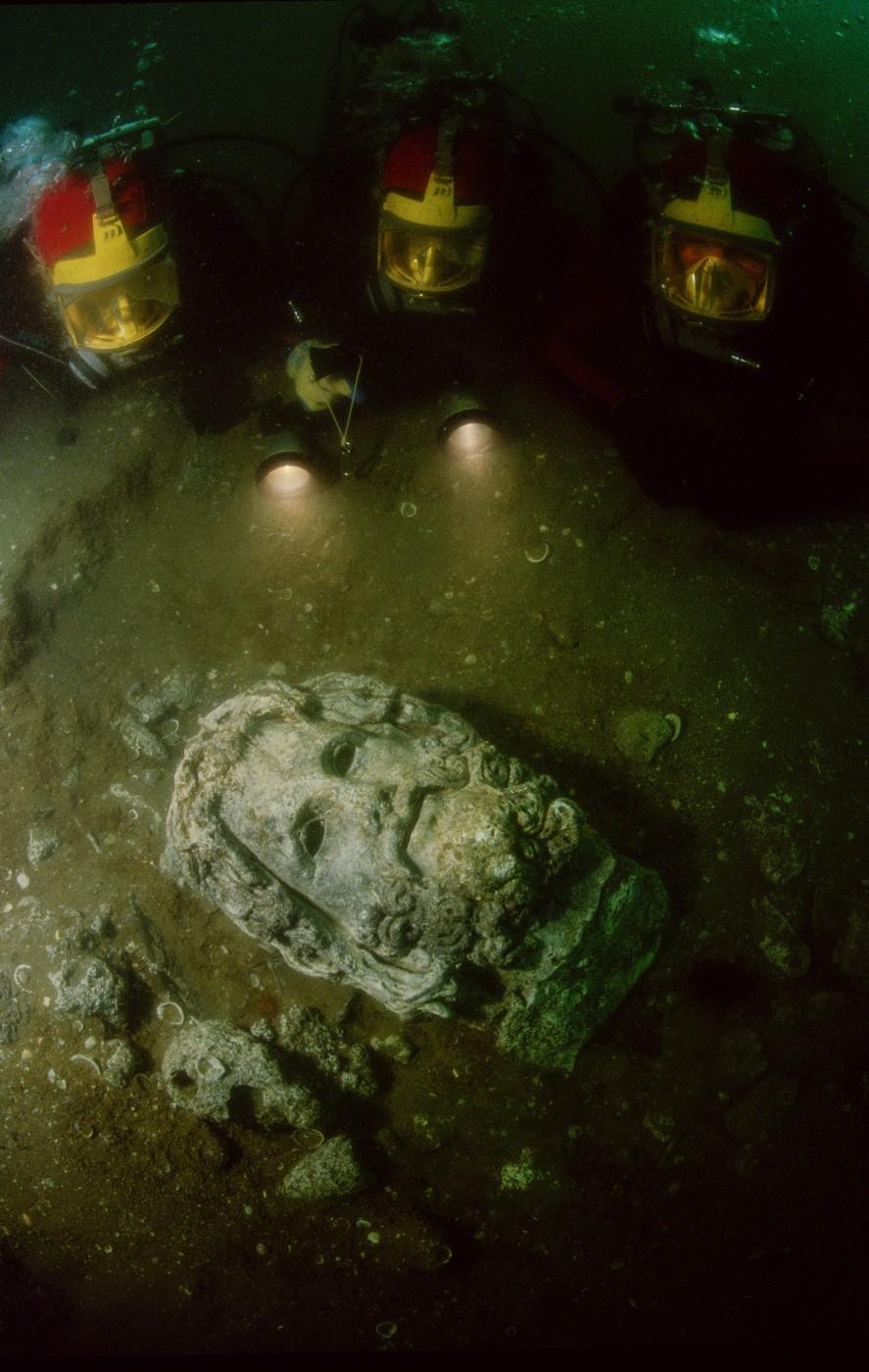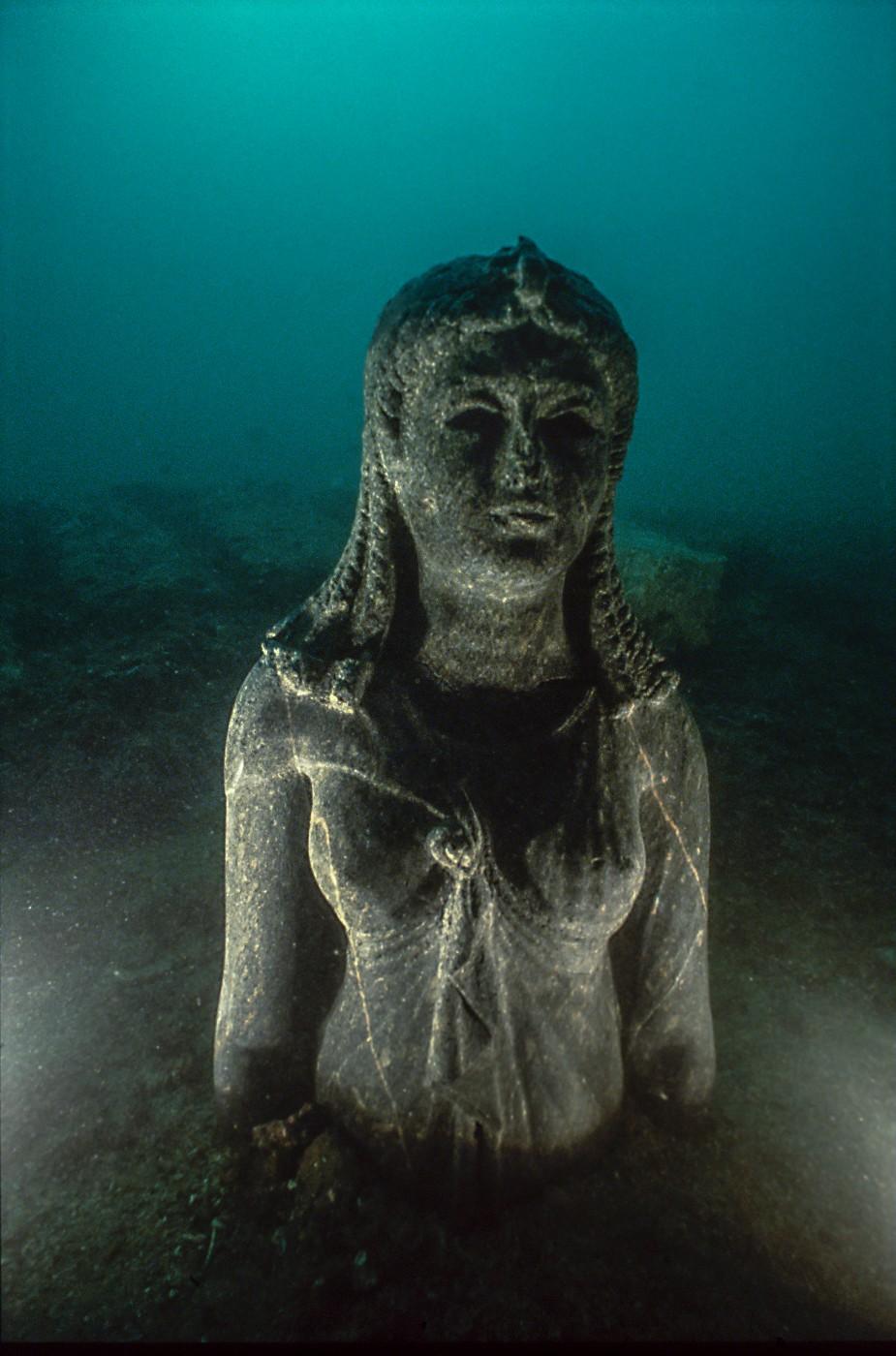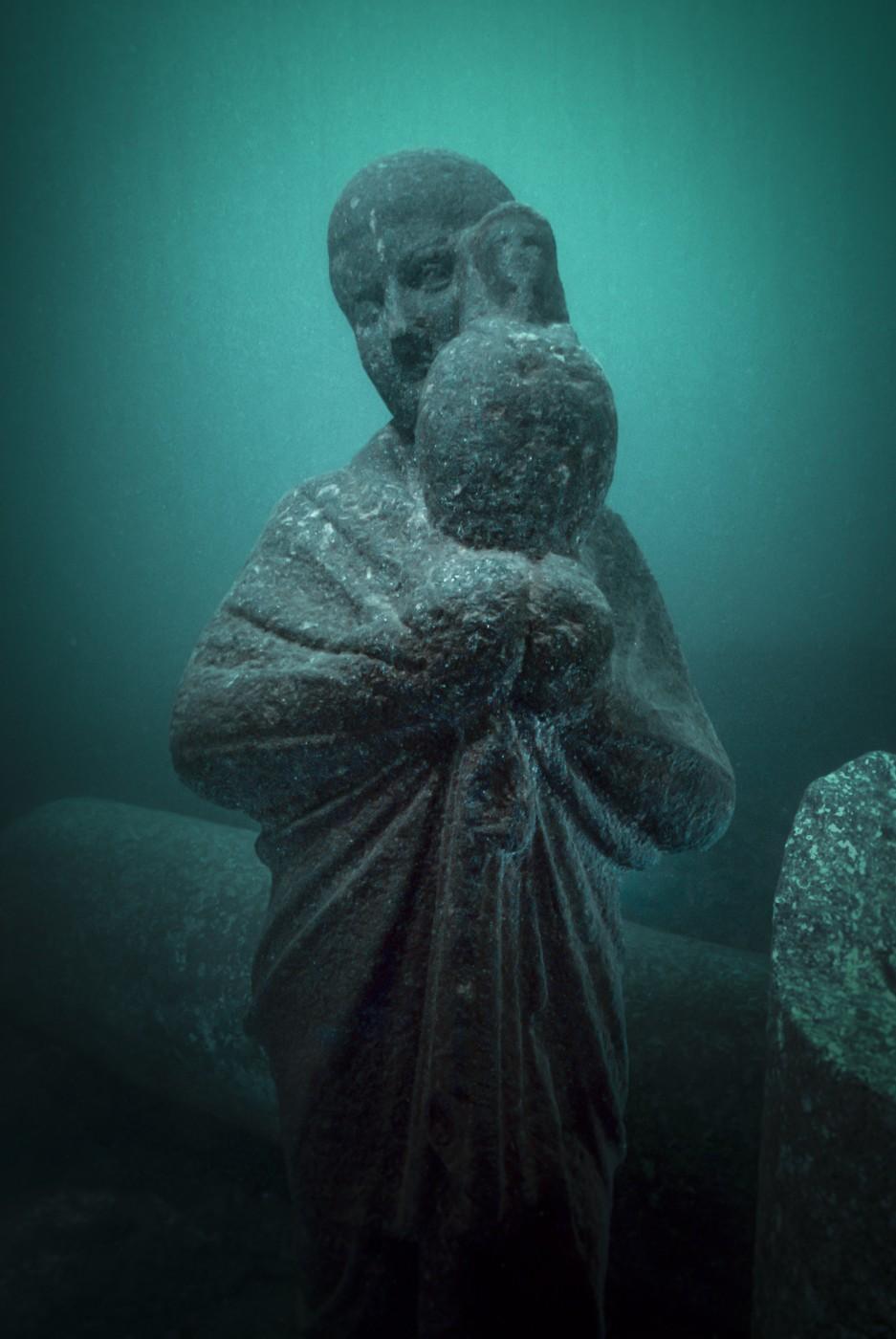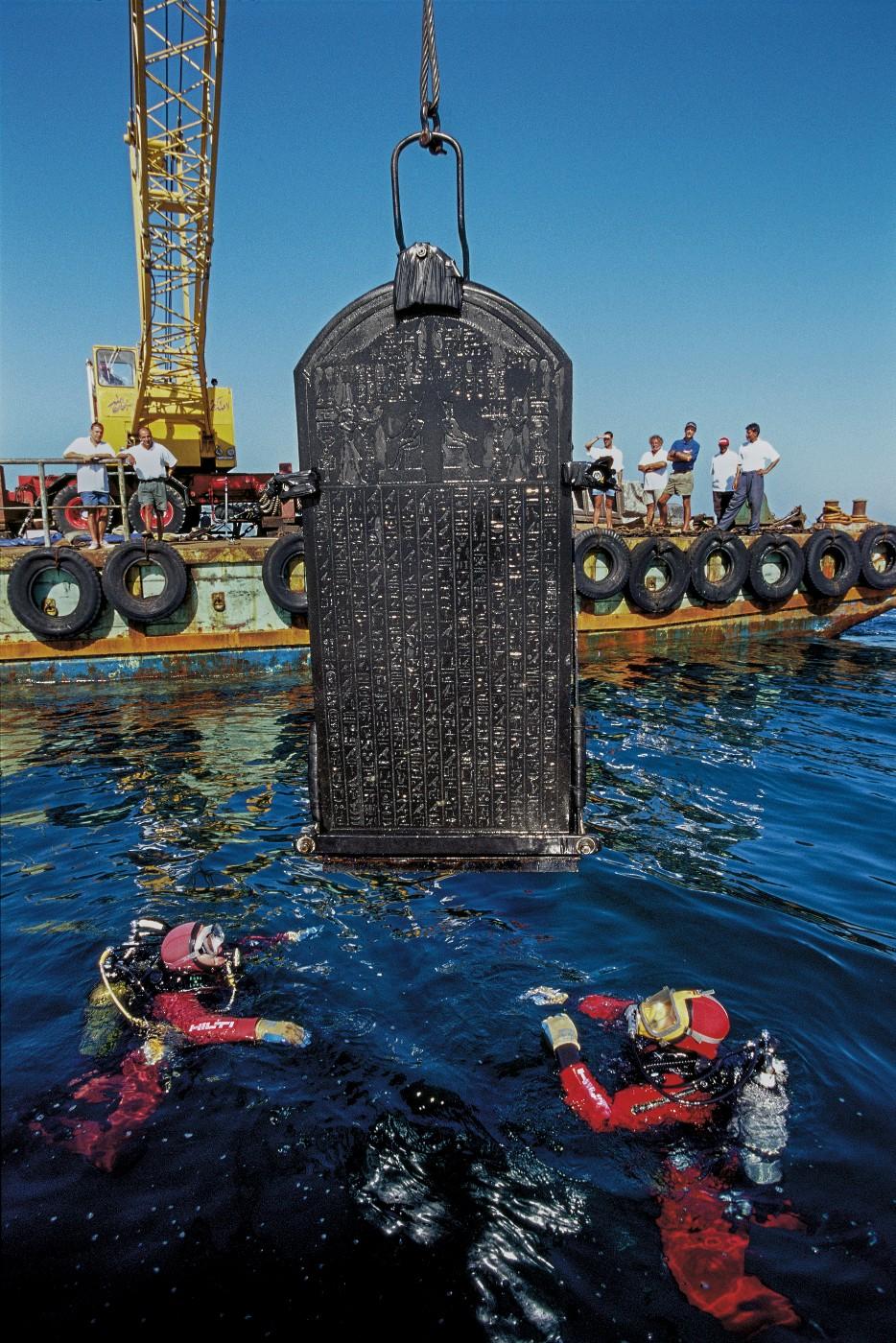Long consigned to myth, Thonis-Heracleion and Canopus were Egyptian port cities that sank into the Mediterranean Sea due to a combination of earthquakes and soil liquefaction. Thonis-Heracleion was a vital trade hub and religious center, making it a rich source of artifacts that can tell us much about this city’s culture and history. The excavation has helped scholars understand the Mysteries of Osiris, an annual water procession along the canals between Thonis-Heracleion and Canopus commemorating one of Egypt’s most important myths—the murder and resurrection of the god Osiris.
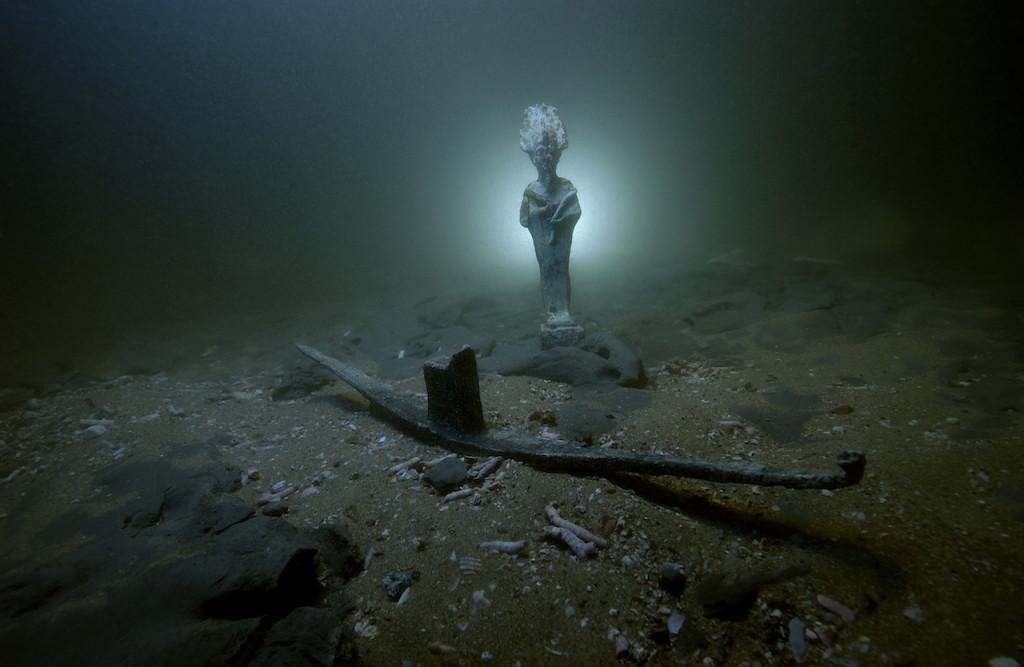
A statuette of Osiris and a model of a processional barge for this god, Heracleion, Egypt; Maritime Museum, Alexandria, IEASM Excavations
Yesterday the Saint Louis Art Museum unveiled a collection of ancient treasures from the sea in “Sunken Cities: Egypt’s Lost Worlds.” On view through September 9th, “Sunken Cities” showcases important artifacts and incredible finds recovered from two ancient Egyptian cities. Submerged for over a thousand years, Thonis-Heracleion and nearby Canopus were rediscovered by underwater archaeologist Franck Goddio and his team. Using clues from the fifth century B.C. Greek historian Herodotus and first century B.C. geographer Strabo, Goddio investigated what he believed lay beneath the waters of the western part of Aboukir Bay. With support from the Egyptian Supreme Council of Antiquities, Goddio spent four years using cutting-edge technology to survey the seabed. Thirty feet underwater, hidden by sea and sand, some of the treasures of Thonis-Heracleion and Canopus have been excavated and are now on view at SLAM.
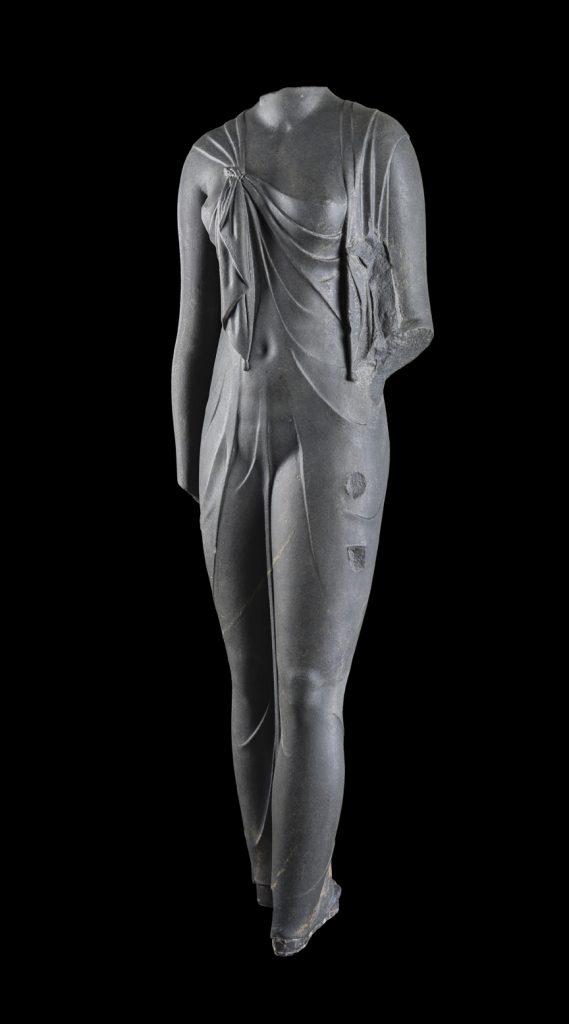
“Statue of Arsinoe”; Canopus, Aboukir Bay, Egypt; Ptolemaic Period; (SCA 208), IEASM Excavations.
This North American premiere of “Sunken Cities” features more than 250 works of art discovered by Goddio’s team over the last seven years, including colossal, 16-foot-tall sculptures, gold and jewels. The exhibition also includes complementary artifacts from museums in Cairo and Alexandria, some of which have never been shown outside of Egypt. For more information, visit http://www.slam.org/exhibitions/sunkencities.php




